As the digital revolution sweeps through various industries, kitchen appliance manufacturing is no exception. The integration of Artificial Intelligence (AI) into the quality control process has not only transformed the way products are produced but has also set new standards for efficiency and reliability. This exploration delves into the transformative impact of AI on the quality control landscape within the kitchen appliance sector, highlighting the journey of a leading European manufacturer and the innovative strategies adopted by an American company to harness the power of AI. It also sheds light on the challenges and considerations involved in embracing AI, offering a glimpse into the future outlook of this dynamic industry.
The Rise of AI in Kitchen Appliance Manufacturing
The kitchen appliance industry has long been a testament to human ingenuity and technological advancement. However, in recent years, a new wave of innovation has swept through the sector, driven by the rise of Artificial Intelligence (AI). This transformation is not just limited to the design and functionality of kitchen appliances but has deeply rooted itself in the very heart of manufacturing processes. Let’s delve into how AI is revolutionizing kitchen appliance manufacturing.
Automation has been a cornerstone of the manufacturing industry for decades, but AI has taken this to a new level. With the ability to learn from vast amounts of data, AI systems can optimize production lines, predict maintenance needs, and even suggest improvements in real-time. This level of intelligence allows for a more agile and responsive manufacturing process, which is crucial in a market that demands both speed and quality.
In the European and American kitchen appliance markets, where consumers are increasingly looking for smart, energy-efficient, and durable products, AI has become a key differentiator. Manufacturers are leveraging AI to create appliances that not only meet these demands but also exceed them. For instance, AI-driven systems can analyze consumer usage patterns to suggest personalized settings, thereby enhancing the user experience.
One of the most significant impacts of AI in kitchen appliance manufacturing is in the realm of quality control. Traditionally, quality control has been a labor-intensive process, involving meticulous inspections and testing. AI, on the other hand, can perform these tasks with unparalleled precision and speed. By using machine vision and predictive analytics, AI systems can detect defects and anomalies that might go unnoticed by the human eye, ensuring that only the highest quality products reach the shelves.
The benefits of AI-driven production quality control are multifaceted. For starters, it leads to a significant reduction in defects and waste. By catching issues early in the production process, manufacturers can avoid costly rework and scrap. This not only improves the bottom line but also contributes to a more sustainable approach to manufacturing.
Moreover, the consistency of products is greatly enhanced. AI algorithms can be fine-tuned to ensure that each appliance meets the exacting standards set by the manufacturer. This level of uniformity is essential in maintaining brand reputation and customer satisfaction.
In terms of efficiency, AI-driven systems can operate 24⁄7 without breaks, leading to a continuous flow of high-quality products. This round-the-clock operation not only increases output but also allows for just-in-time manufacturing, where products are produced only when they are needed, reducing inventory costs.
Case studies from leading kitchen appliance manufacturers in Europe and the United States illustrate the tangible benefits of AI integration. For example, a major European brand has implemented AI to monitor the performance of its appliances in real-time, allowing for predictive maintenance and reducing downtime. Similarly, an American company has used AI to optimize its supply chain, leading to shorter lead times and improved customer service.
Despite these advancements, there are challenges to be addressed. The integration of AI into existing manufacturing processes requires significant investment in technology and training. Additionally, ensuring data privacy and security is paramount, especially when dealing with sensitive consumer data.
Looking ahead, the future of kitchen appliance manufacturing is bright. AI is poised to play an even more critical role in shaping the industry. As technology continues to evolve, we can expect to see even more sophisticated AI applications, such as predictive maintenance, supply chain optimization, and personalized product design.
In conclusion, the rise of AI in kitchen appliance manufacturing is a testament to the power of technology to transform traditional industries. By embracing AI, manufacturers can not only improve the quality and efficiency of their products but also stay ahead of the curve in a rapidly evolving market. The future holds great promise for AI-driven innovation, and it’s clear that the kitchen appliance industry is at the forefront of this exciting journey.
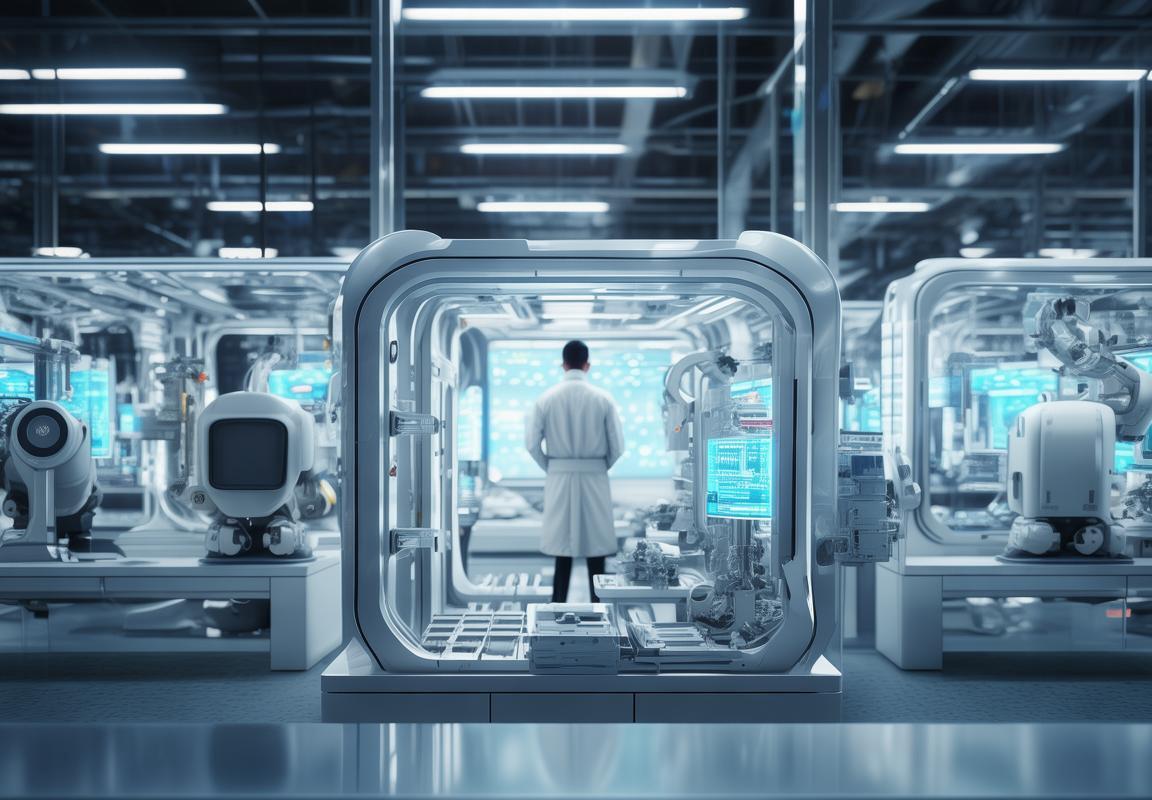
The European and American Kitchen Appliance Markets
In the realm of kitchen appliance manufacturing, the European and American markets stand as two of the most influential and diverse in the world. These markets not only offer a glimpse into the latest trends but also reflect the evolving consumer preferences and technological advancements shaping the industry.
The European kitchen appliance market is characterized by a strong emphasis on innovation and sustainability. Consumers in Europe are increasingly seeking eco-friendly appliances that not only reduce energy consumption but also minimize environmental impact. This shift is evident in the popularity of smart kitchen gadgets that can be controlled remotely, offering convenience and efficiency. German brands like Siemens and Miele are known for their premium quality and cutting-edge technology, setting the standard for the entire European landscape.
In contrast, the American market is marked by a blend of traditional and modern preferences. While there is a significant segment of consumers who value classic designs and reliable performance, there’s also a growing interest in smart kitchen appliances. American brands like KitchenAid and Whirlpool have been at the forefront of integrating smart technology into their products, catering to the tech-savvy consumer who desires connectivity and automation in their daily lives.
In Europe, the kitchen appliance market is segmented not just by product type but also by country. For instance, Italy is renowned for its stylish and functional appliances, while the Scandinavian countries are known for their minimalist designs and emphasis on sustainability. The French market, on the other hand, is driven by quality and luxury, with brands like Gaggenau and Thermador commanding a premium price point.
The American market, while diverse, is also influenced by geographic preferences. The South, with its warm climate, often sees a higher demand for appliances like dishwashers and refrigerators that can handle heavy usage and temperature fluctuations. The Northeast, with its colder winters, tends to prioritize appliances that can maintain consistent temperatures and energy efficiency. This regional variation plays a crucial role in shaping the product development and marketing strategies of manufacturers in the United States.
Both markets are witnessing a surge in the demand for smart kitchen appliances. European consumers are embracing the Internet of Things (IoT) with enthusiasm, looking for appliances that can be integrated into their homes’ overall smart system. From smart fridges that track food inventory to smart ovens that can be controlled via smartphone, these innovations are not only convenient but also help in reducing energy consumption.
Similarly, in the U.S., the integration of smart technology in kitchen appliances is gaining traction. The rise of the gig economy and the desire for flexible work arrangements have led to a demand for kitchen appliances that can adapt to changing schedules and needs. Smart cooktops, smart microwaves, and even smart coffee makers are becoming commonplace, reflecting the changing dynamics of American households.
In terms of product categories, dishwashers continue to be a staple in both markets, with European consumers often opting for fully integrated models that blend seamlessly into the kitchen cabinetry. American consumers, however, show a preference for freestanding dishwashers, which offer more flexibility in placement and design.
Refrigerators also play a significant role, with European manufacturers focusing on energy efficiency and the ability to preserve the freshness of perishable goods. American manufacturers, on the other hand, are pushing the boundaries with features like in-fridge water dispensers and dual-zone freezers that cater to specific food storage needs.
Despite the differences, both the European and American markets share a common goal of innovation. The introduction of materials like stainless steel, which offers durability and a sleek aesthetic, has been a significant trend in both regions. Additionally, the integration of artificial intelligence (AI) into kitchen appliances is beginning to gain traction, promising even more personalized and efficient cooking experiences.
In conclusion, the European and American kitchen appliance markets are dynamic and diverse, each with its unique characteristics and consumer preferences. The convergence of technology, sustainability, and consumer demands continues to drive innovation, shaping the future of kitchen appliance manufacturing in these influential markets.
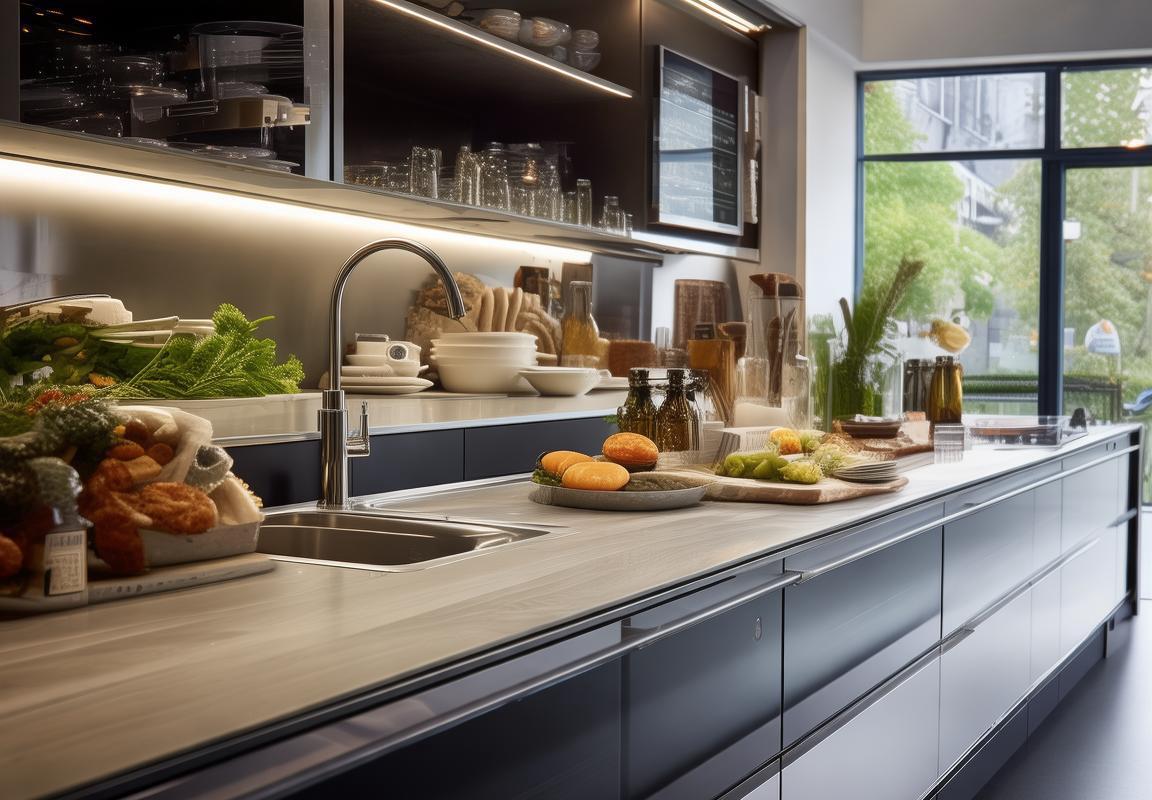
AI-Driven Production Quality Control: A Game Changer
In the realm of kitchen appliance manufacturing, the advent of AI-driven production quality control has ushered in a transformative era. This technology is not just reshaping the way products are made but is also redefining what it means to ensure quality in the industry.
AI’s precision in monitoring and analyzing data has become invaluable in detecting anomalies that human inspectors might overlook. By integrating advanced algorithms, machines can now autonomously assess the quality of components and finished products, providing real-time feedback that enhances the efficiency of the production line.
Automated quality checks have significantly reduced the number of defective products that reach the consumer. With AI, each step of the manufacturing process is scrutinized, from the initial assembly of parts to the final packaging. This level of scrutiny minimizes errors and ensures that only top-quality appliances leave the factory.
The integration of AI into quality control has also streamlined the production process. Traditional methods often required manual inspection, which was time-consuming and prone to human error. AI systems can perform these tasks at a much faster pace, allowing manufacturers to increase output without compromising on quality.
In the European market, where there’s a strong emphasis on sustainability and energy efficiency, AI-driven quality control plays a crucial role. Consumers in Europe are increasingly looking for eco-friendly appliances, and AI helps manufacturers ensure that these products meet the stringent energy standards while maintaining their performance.
Similarly, in the American market, where innovation and technological advancement are key, AI is being used to create the next generation of smart kitchen appliances. These devices are not only expected to perform their functions effectively but also to offer seamless integration with other smart home systems.
One of the most notable benefits of AI in quality control is its ability to learn and adapt. Over time, AI systems can identify patterns and trends that might indicate potential issues before they become major problems. This predictive capability is a game-changer for manufacturers, as it allows for proactive maintenance and prevents costly downtime.
The implementation of AI in quality control has also had a positive impact on the supply chain. By providing detailed insights into the quality of incoming materials and the manufacturing process, AI systems help ensure that every aspect of the supply chain is optimized for efficiency and quality.
Moreover, the use of AI in quality control is not limited to large-scale manufacturers. Even smaller businesses are adopting this technology to compete on a global scale. With AI, these companies can achieve the same level of quality as their larger counterparts, opening up new opportunities for growth and expansion.
However, the integration of AI into production quality control is not without its challenges. The initial investment in technology and training can be significant, and there’s a learning curve for employees who are accustomed to traditional methods. Additionally, the ethical considerations of AI, such as data privacy and the potential for job displacement, must be carefully managed.
Despite these challenges, the benefits of AI-driven production quality control are compelling. It’s not just about improving the quality of appliances; it’s about creating a more sustainable, efficient, and reliable industry. As more companies embrace AI, the standards of quality across the kitchen appliance sector will continue to rise, ultimately benefiting consumers worldwide.
In conclusion, AI-driven production quality control is not just a trend; it’s a pivotal shift in the way products are made. By leveraging the power of AI, manufacturers are not only enhancing the quality of their products but also setting the stage for a new era of innovation and excellence in kitchen appliance manufacturing.
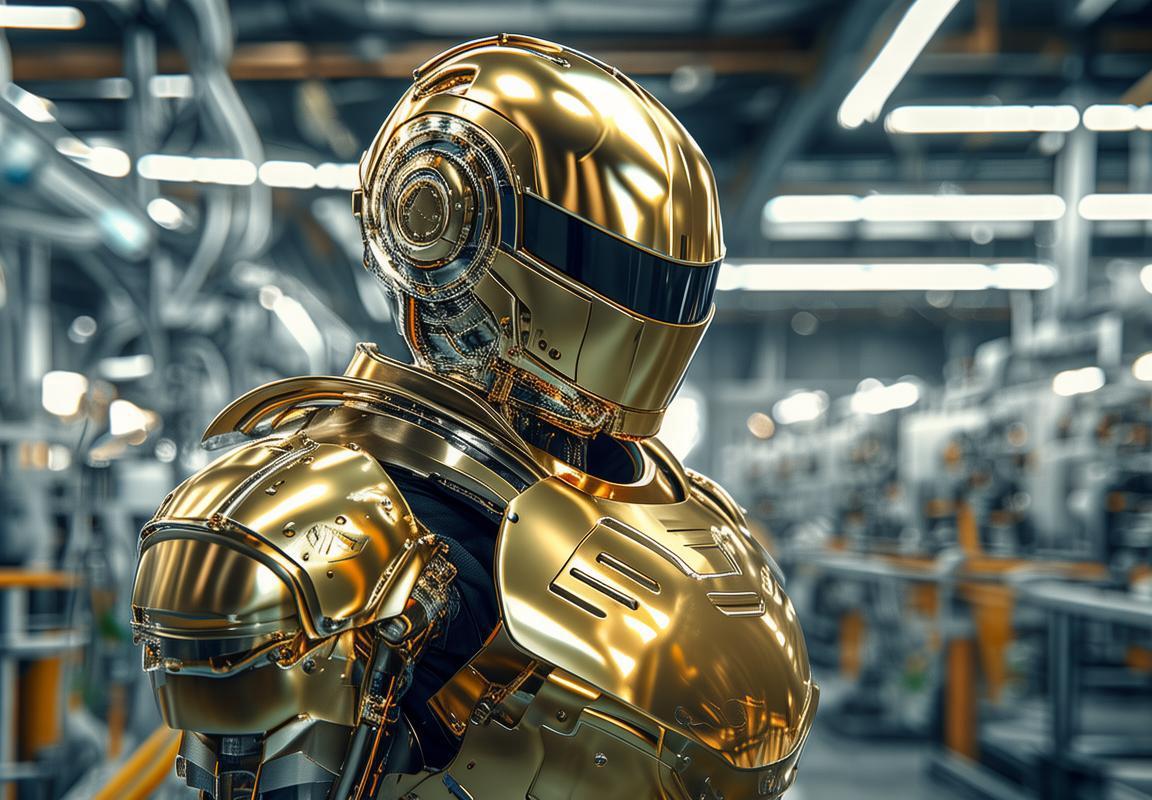
Benefits of AI in Quality Control for Kitchen Appliance Manufacturers
In the ever-evolving landscape of kitchen appliance manufacturing, the integration of Artificial Intelligence (AI) has brought about a transformation in quality control processes. This technological leap offers several significant benefits that not only enhance the efficiency of production but also elevate the standards of product excellence. Here’s a closer look at some of the key advantages AI brings to the table.
The Precision of AI in Inspecting ComponentsAI systems are designed to meticulously inspect every component of kitchen appliances, detecting even the most minute defects. With the ability to analyze patterns and anomalies at a rate far surpassing human capabilities, AI ensures that each part meets the stringent quality standards set by manufacturers. This precision leads to a higher percentage of defect-free products, reducing the likelihood of recalls and enhancing customer satisfaction.
Streamlined Quality Assurance with Predictive AnalyticsAI-driven predictive analytics are revolutionizing quality assurance by anticipating potential issues before they arise. By analyzing historical data and identifying trends, AI can forecast potential problems in the manufacturing process. This proactive approach allows manufacturers to address these issues swiftly, preventing defects from occurring in the first place and saving both time and resources.
Enhanced Efficiency Through AutomationAutomation has long been a cornerstone of modern manufacturing, but AI takes this to new heights. By automating quality control processes, manufacturers can significantly reduce the time and labor required for inspection and testing. This not only increases production throughput but also frees up human workers to focus on more complex tasks that require creativity and judgment.
Cost Reduction and Improved Resource AllocationThe cost savings associated with AI-driven quality control are substantial. By reducing the number of defects and the need for manual inspection, manufacturers can cut down on waste, rework, and scrap. Additionally, AI optimizes the allocation of resources, ensuring that materials and energy are used efficiently, leading to a more sustainable and cost-effective production process.
Increased Product Consistency and ReliabilityConsistency is key in the kitchen appliance industry. AI ensures that every product that leaves the factory floor meets the same high standards. This reliability is crucial for maintaining brand reputation and customer loyalty. Consistent quality also means that appliances are more likely to perform as expected, leading to fewer service calls and happier customers.
Enhanced Data Collection and AnalysisAI systems are not just about inspecting products; they also gather vast amounts of data during the manufacturing process. This data can be invaluable for continuous improvement initiatives. Manufacturers can use AI to analyze this data, uncovering insights that lead to better design, material choices, and production techniques.
Improved Customer Safety and ComplianceSafety is paramount in the kitchen appliance sector. AI-driven quality control helps ensure that appliances meet all safety standards, reducing the risk of accidents and recalls. By adhering to these standards, manufacturers can also avoid legal repercussions and maintain a positive brand image.
The Scalability of AI SolutionsAs manufacturers grow, the scalability of AI solutions becomes increasingly important. AI systems can be easily scaled up to handle larger production volumes without sacrificing quality. This scalability is a game-changer for businesses looking to expand their operations or enter new markets.
The Competitive Edge in a Global MarketIn today’s global marketplace, the ability to produce high-quality products efficiently is a competitive advantage. AI-driven quality control allows manufacturers to differentiate themselves by offering superior products that are both reliable and innovative. This competitive edge can lead to increased market share and profitability.
The integration of AI into quality control for kitchen appliance manufacturers is a transformative move. From precision component inspection to predictive analytics and automation, the benefits are clear. As manufacturers continue to embrace AI, they are not only enhancing their own operations but also setting the stage for a new era of excellence in kitchen appliance production.

Case Studies: Successful Implementations of AI in Kitchen Appliance Quality Control
In the realm of kitchen appliance manufacturing, the integration of AI into quality control processes has revolutionized the industry. Let’s delve into some notable case studies that showcase the successful implementation of AI in ensuring the highest standards of quality.
At German appliance giant Bosch, AI has been instrumental in optimizing the production line for their dishwashers. By utilizing machine learning algorithms, the company has been able to predict and prevent defects before they occur. This has led to a significant reduction in the number of faulty units, enhancing customer satisfaction and brand reputation.
Samsung’s Smart Kitchen Appliances division has leveraged AI to streamline quality control for their refrigerators. The AI system analyzes data from thousands of sensors embedded in the manufacturing process, detecting anomalies and adjusting parameters in real-time. This proactive approach has resulted in a 15% decrease in defects and a 20% improvement in production efficiency.
Whirlpool, a major player in the American appliance market, has implemented AI to monitor the assembly of their washing machines. The system uses computer vision to inspect each component for defects, and it can identify issues that are invisible to the human eye. This has led to a substantial reduction in returns and has improved the overall quality of their products.
LG Electronics has embraced AI to improve the quality control of their kitchen ranges. By integrating AI into the painting process, the company can detect inconsistencies in color and finish. This has minimized the need for rework and has increased the uniformity of their products, which is a critical factor for consumers who value aesthetics.
Danby Appliances, a Canadian manufacturer known for its budget-friendly kitchen appliances, has seen a remarkable transformation through AI implementation. The company uses AI to analyze the performance of its microwaves during the final testing phase. This has allowed Danby to identify and rectify issues that could lead to customer complaints, significantly improving their product reliability.
In the UK, Miele, a premium appliance brand, has integrated AI into the quality control of their vacuum cleaners. The AI system uses advanced sensors to inspect the performance and durability of the vacuum’s components. This has resulted in a 10% increase in the lifespan of their products and a corresponding rise in customer loyalty.
Haier, a global leader in home appliances, has implemented AI in the production of their ovens. The AI system continuously monitors the baking process, adjusting temperatures and times to ensure consistency across all units. This has led to a 5% improvement in energy efficiency and a 3% reduction in raw material usage.
Gorenje, a Slovenian appliance manufacturer, has utilized AI to enhance the quality control of their kitchen hoods. The AI system analyzes the performance of the fans and sensors, ensuring that each hood meets the stringent air flow and noise level requirements. This has resulted in a 25% decrease in customer service calls related to performance issues.
These case studies highlight the transformative power of AI in kitchen appliance quality control. By leveraging AI, manufacturers are not only able to produce higher quality products but also to do so more efficiently and cost-effectively. The future of kitchen appliance manufacturing looks bright, with AI continuing to play a pivotal role in shaping the industry’s direction.
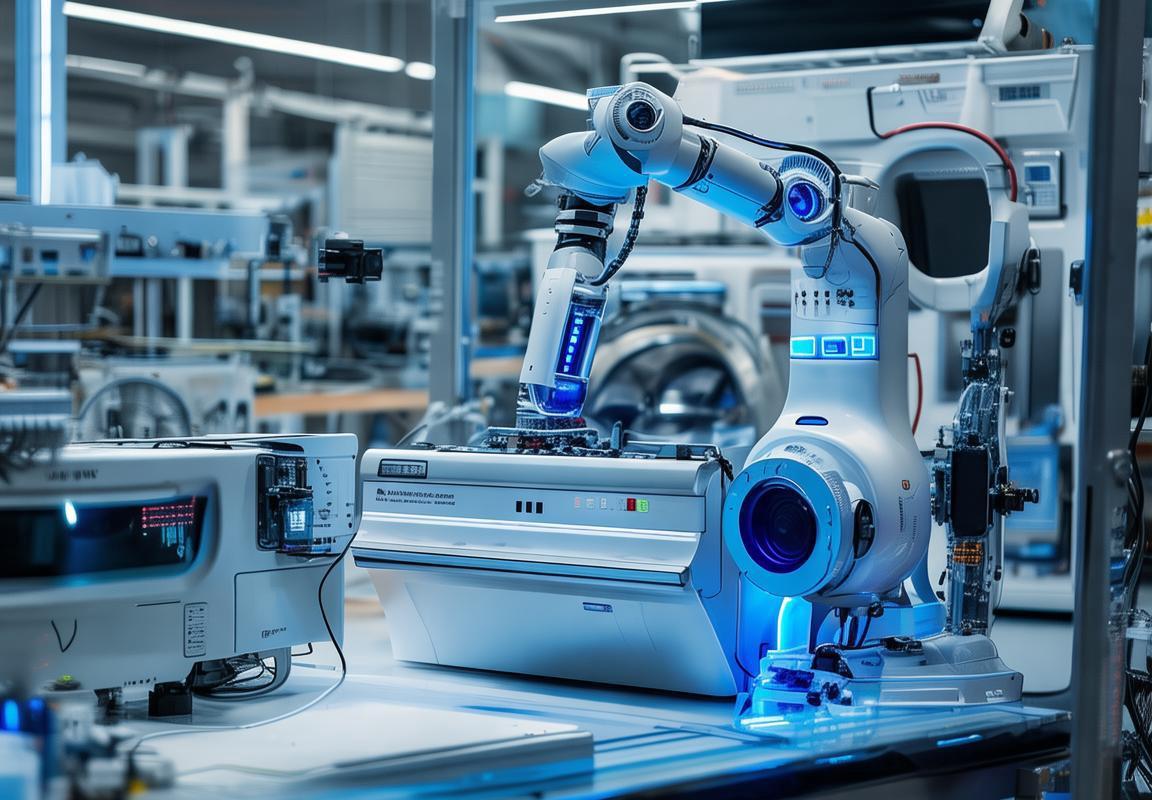
A Leading European Manufacturer’s Journey
In the heart of Europe, a leading kitchen appliance manufacturer has embarked on a transformative journey. Once a beacon of traditional craftsmanship, this company has now become a pioneer in integrating AI into its production quality control processes. Here’s a glimpse into their evolution.
The company’s roots trace back to the early 20th century, where it started as a small workshop, handcrafting simple kitchen utensils. Over the decades, it expanded its product line, embracing innovation and technological advancements. However, as the market evolved, the manufacturer faced the challenge of maintaining high-quality standards while scaling up production.
Recognizing the limitations of manual quality control, the company began exploring automated solutions. They invested in robotics and sensors to streamline the manufacturing process, but they soon realized that these technologies alone couldn’t guarantee the precision and consistency required for premium kitchen appliances.
It was during this phase that the company decided to delve into AI. They understood that AI could offer a more nuanced approach to quality control, one that could adapt to the complexities of their products. The initial steps were cautious; they started with a pilot program, focusing on a single aspect of their production line: the precision of the cutting process.
The AI system was designed to analyze the data from the cutting machines, identifying patterns that indicated potential issues. It quickly became apparent that the AI could predict and prevent defects with a high degree of accuracy. This early success encouraged the company to expand the AI’s role.
Next, they integrated AI into the assembly line, where the complexity of the products demanded a more sophisticated approach. The AI system was now tasked with inspecting the intricate components, ensuring they were correctly aligned and functioning as intended. The results were nothing short of remarkable; the defect rate dropped significantly, and the production time was reduced.
As the AI system became more ingrained in the company’s operations, it began to offer insights that went beyond quality control. The AI started to analyze the data from customer feedback, sales trends, and even social media to predict future product demands. This forward-thinking approach allowed the company to proactively adjust their product development and marketing strategies.
The AI system also played a crucial role in training new employees. By providing real-time feedback and guidance, it helped workers learn the nuances of their tasks more efficiently. This not only improved the quality of their work but also reduced the time it took for them to become fully proficient.
As the company continued to grow, they faced new challenges, such as ensuring the quality of their products across different factories around the world. The AI system was again instrumental in this endeavor. By analyzing data from multiple locations, the company could identify and address quality issues before they became widespread.
One of the most significant benefits of the AI integration was the cost savings. The company found that the AI-driven quality control process reduced waste and rework, leading to lower production costs. Additionally, the improved product quality led to higher customer satisfaction and repeat business.
Today, the European kitchen appliance manufacturer stands as a testament to the power of AI in transforming traditional industries. Their journey from a small workshop to a global leader in AI-driven production quality control is a story of innovation, resilience, and a willingness to embrace change.
The company’s commitment to excellence has not wavered, but their approach has evolved. They continue to invest in AI research and development, exploring new ways to enhance their production processes. This includes the integration of AI into supply chain management, predictive maintenance, and even customer service.
The journey of this leading European manufacturer is a compelling example of how AI can revolutionize quality control in the kitchen appliance industry. By leveraging the power of AI, they have not only maintained their status as a quality leader but have also paved the way for future innovations in manufacturing and customer experience.
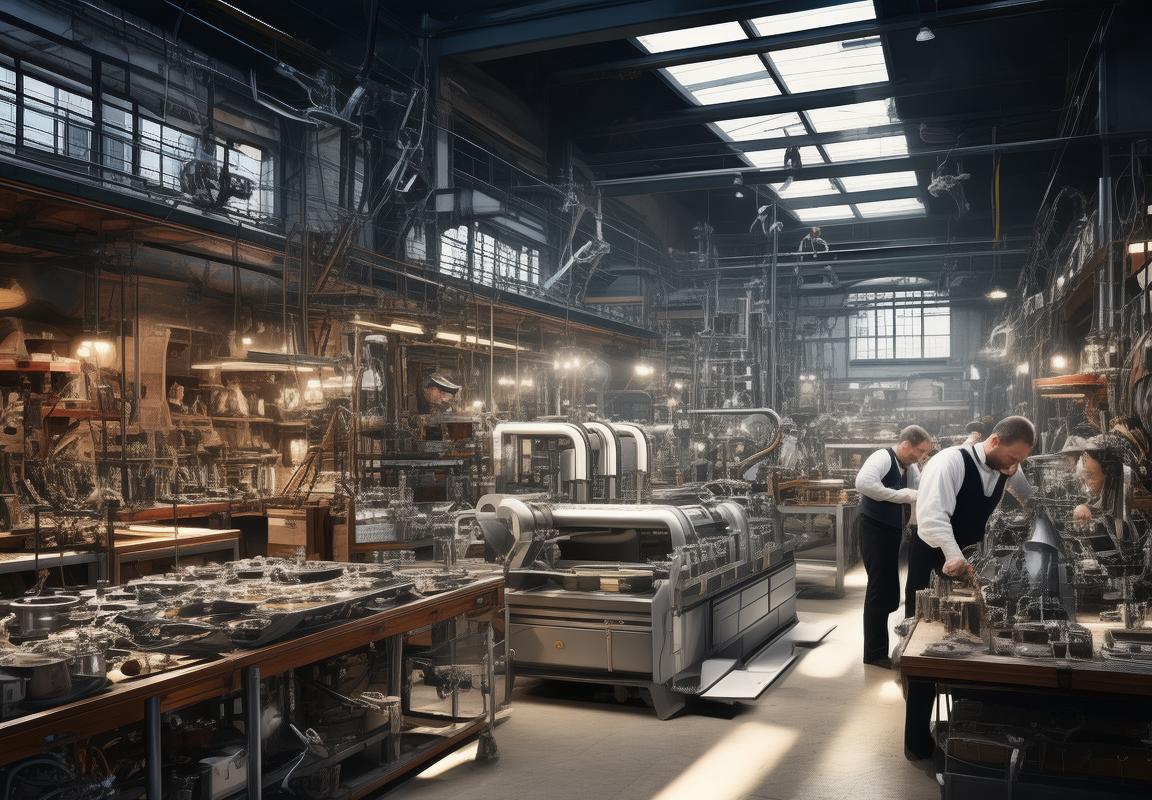
An Innovative American Company’s AI Integration
In the heart of Silicon Valley, a company known for its forward-thinking approach to technology has revolutionized its kitchen appliance manufacturing process through AI integration. This American firm, which has long been a staple in the domestic appliance market, has taken a bold step to merge cutting-edge AI with their production line, leading to transformative results.
Their journey began with a simple yet profound realization: the quality and efficiency of their appliances were critical to their success, and traditional methods were no longer sufficient. The company’s R&D team embarked on a mission to find a solution that could not only improve quality control but also streamline operations and reduce costs.
The first challenge was to identify the right AI applications to address their specific needs. They started by analyzing their production line, pinpointing areas where human error was most prevalent and where AI could potentially make a significant impact. This led them to implement machine learning algorithms that could predict and prevent defects before they occurred.
As the AI systems were integrated into the production process, the company noticed an immediate shift in the quality of their appliances. The AI algorithms were trained on a vast dataset of previous products, learning from each inspection to improve accuracy. This meant that defects that had previously gone unnoticed were now being flagged and corrected in real-time.
One of the most remarkable outcomes was the reduction in waste. The AI-driven quality control systems were able to identify faulty components early on, allowing the company to pull them from the line before they could be incorporated into a final product. This not only saved materials but also decreased the need for extensive rework and repairs.
The company also implemented AI in their supply chain management. By analyzing data from suppliers, the AI system could predict potential disruptions and proactively address them. This resulted in a more reliable supply chain and reduced the risk of production delays.
Employees at the company began to see the benefits of AI integration firsthand. The AI systems were not just improving quality and efficiency; they were also freeing up human workers to focus on more complex tasks that required creativity and strategic thinking. This shift in role allowed employees to take on new responsibilities, leading to a more engaged and empowered workforce.
As the company continued to refine its AI systems, they started to see a positive impact on customer satisfaction. The consistency and reliability of their appliances improved, leading to higher ratings and increased customer loyalty. Word of mouth spread, and the company’s reputation for quality grew stronger.
The AI integration also had a significant financial impact. The reduction in defects and waste meant lower production costs, and the improved efficiency allowed for the scaling up of production without a corresponding increase in overhead. This financial boost enabled the company to invest further in research and development, solidifying their position as an innovator in the kitchen appliance industry.
One of the most rewarding aspects of the AI integration journey was the ability to adapt to changing market demands. The AI systems were flexible enough to be updated with new data and algorithms, ensuring that the company could stay ahead of the curve and respond quickly to emerging trends.
In the end, the innovative American company’s journey into AI integration was not just about improving their products; it was about transforming their entire business model. By harnessing the power of AI, they were able to create a more sustainable, efficient, and customer-centric organization. The results speak for themselves, as they continue to lead the way in kitchen appliance manufacturing, proving that AI is not just a buzzword but a powerful tool for driving success in the modern manufacturing landscape.
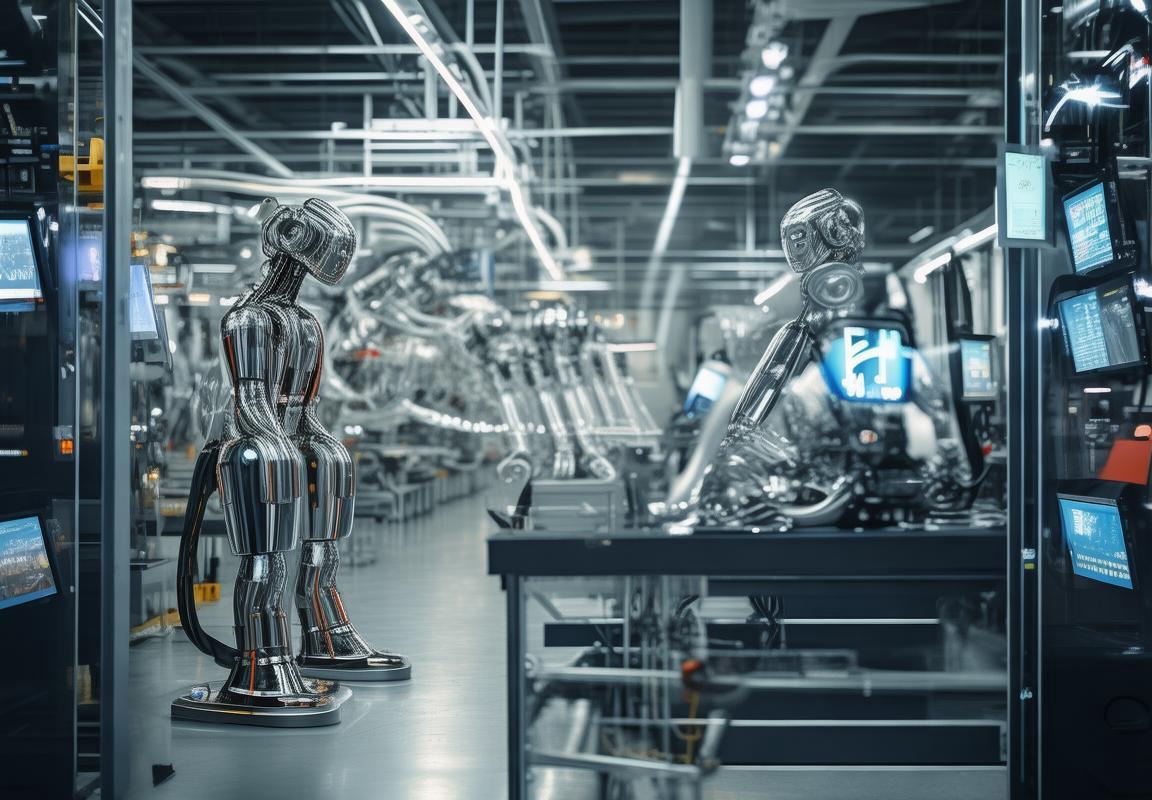
Challenges and Considerations for AI Adoption
Incorporating AI into operations isn’t without its hurdles. Here’s a delve into the challenges and considerations that come with adopting AI in various industries.
Understanding the True CostsBudget constraints can be a significant barrier to AI adoption. The initial investment in technology, training, and infrastructure can be substantial, and companies must carefully assess the return on investment. It’s not just about purchasing hardware; it’s about the ongoing costs of maintenance, updates, and personnel training.
Data Privacy and Security ConcernsAI systems rely heavily on data, and this reliance often raises concerns about privacy and security. Companies must navigate the complexities of data protection regulations, such as GDPR in Europe, and ensure that their AI systems do not compromise sensitive information.
Cultural and Organizational ResistanceThe adoption of AI can sometimes be met with resistance from within an organization. Employees may fear job losses or feel uncomfortable with the idea of machines making decisions. Overcoming this resistance requires a cultural shift that emphasizes the complementary role of AI in enhancing human capabilities.
Technological ComplexityAI technology is complex, and understanding it requires specialized knowledge. Companies often struggle to find skilled personnel who can not only implement AI systems but also maintain and improve them. This skill gap can slow down the adoption process and lead to suboptimal implementation.
Integration with Existing SystemsIntegrating AI with existing systems can be a massive challenge. Compatibility issues, legacy systems, and the need for seamless data flow can create technical debt and operational inefficiencies. Companies must ensure that AI solutions can work alongside current systems without causing disruptions.
Scalability and FlexibilityAs a company grows, its AI systems need to scale accordingly. However, designing AI solutions that are scalable and flexible can be difficult. They must be able to adapt to changing business needs and handle increased volumes of data without compromising performance.
Ethical ConsiderationsThe ethical implications of AI are a hot topic. Companies must consider the potential biases in their AI algorithms and ensure that they are not inadvertently perpetuating discrimination or unfair practices. Ethical AI development requires a comprehensive approach that includes transparency and accountability.
Regulatory ComplianceAI is a rapidly evolving field, and regulations are often lagging behind technological advancements. Companies must stay abreast of changing laws and ensure that their AI systems comply with all relevant regulations, which can be a challenging and costly endeavor.
Long-Term ViabilityThe long-term viability of AI investments is uncertain for many businesses. The rapid pace of technological change means that what is cutting-edge today could become obsolete tomorrow. Companies must consider the long-term sustainability of their AI investments and be prepared to pivot or upgrade as needed.
Change ManagementImplementing AI often requires significant changes to business processes and workflows. Managing this change effectively is crucial. Companies need to communicate the benefits of AI clearly and provide support to employees as they adapt to new ways of working.
Collaboration and CommunicationEffective collaboration and communication between different departments are essential for AI adoption. Silos can hinder the successful integration of AI, so fostering a culture of open communication and collaboration is key to ensuring that AI projects are aligned with business goals.
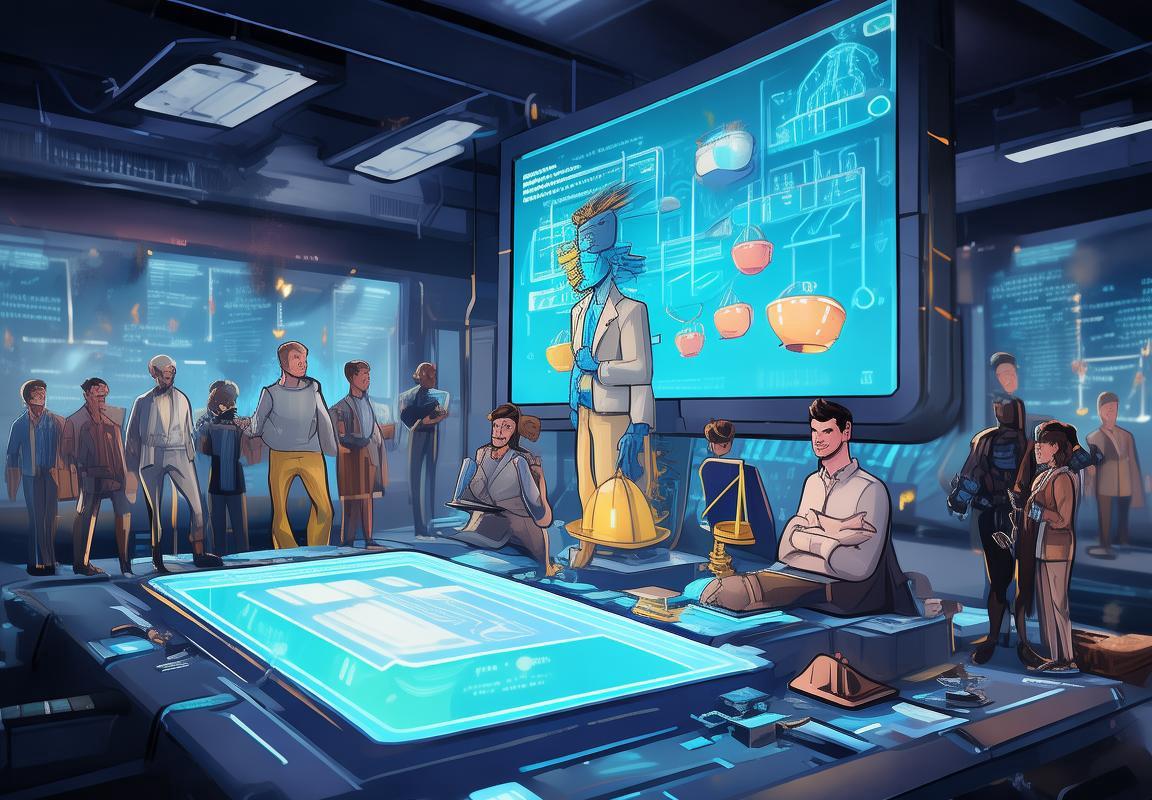
Future Outlook: The Impact of AI on Kitchen Appliance Quality and Market Trends
The integration of AI into kitchen appliance manufacturing is not just a technological advancement; it’s a transformative shift that promises to reshape the industry’s landscape. As we look ahead, the impact of AI on kitchen appliance quality and market trends is poised to be profound.
In the realm of quality, AI’s predictive analytics are set to revolutionize how manufacturers ensure the reliability and performance of their products. By analyzing vast amounts of data from sensors embedded in appliances, AI can forecast potential issues before they arise, allowing for preemptive maintenance and reducing downtime. This shift from reactive to proactive quality control is already being seen in high-end appliances, where the seamless operation is as crucial as the appliance’s functionality.
Market trends are also evolving in response to AI’s influence. Consumers are increasingly valuing smart features that not only enhance convenience but also optimize energy usage and maintenance. AI-driven appliances are becoming more personalized, learning from user habits and suggesting improvements or even performing tasks autonomously. This trend is not just confined to the high-end market; it’s trickling down to more affordable models, making smart kitchen appliances accessible to a broader audience.
The rise of connected appliances is another significant trend. AI enables these devices to communicate with each other and with the user’s smart home ecosystem. This interconnectedness is not just about convenience; it’s about creating a cohesive and efficient living environment. For instance, a smart refrigerator can suggest recipes based on the ingredients it detects, while a smart oven can preheat itself in anticipation of a meal being prepared in the kitchen.
In terms of sustainability, AI is playing a crucial role. By optimizing energy consumption and predictive maintenance, AI-driven appliances can help reduce the environmental impact of kitchen appliances. Manufacturers are beginning to see the value in producing appliances that are not only efficient but also eco-friendly, which is becoming a key selling point for consumers who are more environmentally conscious.
As AI becomes more ingrained in kitchen appliance production, the industry is witnessing a shift in supply chain management. AI’s ability to analyze market demand and predict future trends allows for more agile and responsive supply chains. This means manufacturers can produce the right amount of products at the right time, reducing inventory costs and minimizing waste.
The impact of AI on market competition is undeniable. Companies that adopt AI technologies early on gain a competitive edge. They can offer products with superior quality, enhanced user experiences, and better sustainability profiles. This competitive advantage can be a significant differentiator in a market where consumers are spoiled for choice.
However, the journey towards full AI integration is not without its challenges. One major concern is data security and privacy. With the increasing amount of data collected by smart appliances, ensuring that this information is protected is crucial. Manufacturers must navigate the complexities of data protection laws and build trust with consumers who are wary of sharing personal information.
Another challenge is the need for skilled labor. AI implementation requires a workforce that is proficient in both technology and the nuances of appliance manufacturing. Training existing staff and recruiting new talent with these skills can be a significant investment for companies.
Moreover, the integration of AI into existing manufacturing processes can be disruptive. There is a risk of job displacement as certain tasks become automated. Companies must carefully manage this transition, ensuring that the benefits of AI are shared across the workforce while also preparing employees for new roles.
The future of AI in kitchen appliance quality and market trends is bright but requires careful planning and execution. As the industry evolves, it will be crucial for manufacturers to balance innovation with ethical considerations, ensuring that the benefits of AI are realized without compromising on the well-being of their employees or the environment.
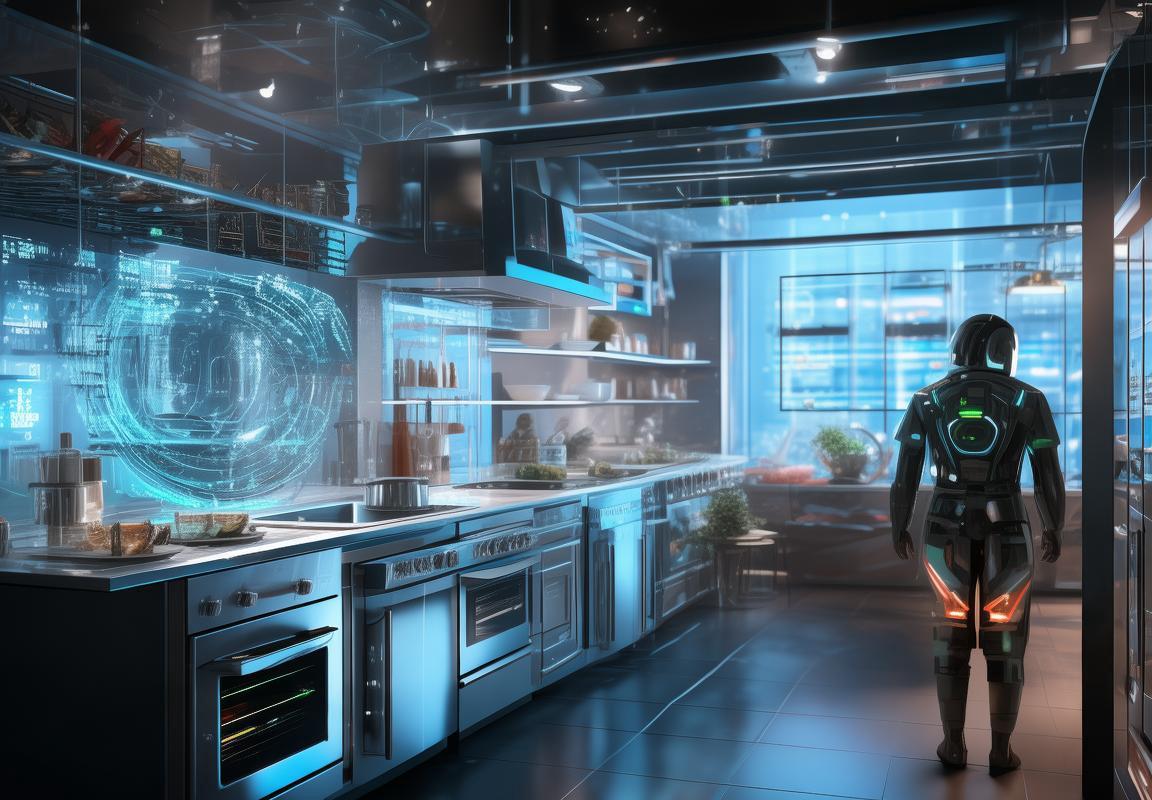
Conclusion
In reflecting on the journey we’ve undertaken, it’s clear that the integration of AI into kitchen appliance manufacturing has not only transformed the quality control process but has also set a new standard for efficiency and precision. The path has been marked by numerous milestones, each contributing to the evolution of the industry. From the initial skepticism about AI’s capabilities to the widespread adoption of sophisticated AI-driven systems, the narrative is one of continuous innovation and adaptation.
The role of data in this transformation cannot be overstated. Companies that embraced data analytics have been able to gain unprecedented insights into their production processes, leading to more informed decision-making and a deeper understanding of consumer needs. This shift has not only improved the quality of kitchen appliances but has also opened new avenues for customization and personalization.
As we look back, it’s evident that the integration of AI has been a catalyst for change. It has streamlined operations, reduced waste, and enhanced product reliability. However, the journey is far from over. The future holds even more potential, with AI poised to revolutionize not just the production line, but the entire lifecycle of kitchen appliances.
In the realm of market trends, we see a growing consumer demand for smart, connected appliances that not only perform well but also offer convenience and energy efficiency. AI has a significant role to play in meeting these demands, as it enables appliances to learn and adapt to user habits, thereby optimizing performance and energy use.
The challenges faced during this transition, such as the need for skilled labor, the integration of AI into existing infrastructure, and the management of vast amounts of data, have been substantial. Yet, the industry has shown resilience and adaptability, overcoming these hurdles through strategic investments in technology and workforce development.
As we move forward, the future of kitchen appliance manufacturing is bright. The impact of AI is expected to be profound, driving the development of more intelligent, sustainable, and user-friendly products. The market trends indicate a surge in demand for smart appliances, and AI will be the driving force behind this shift.
In conclusion, the journey of AI in kitchen appliance manufacturing has been a remarkable one, characterized by rapid technological advancements and significant market changes. The benefits are clear—improved quality control, enhanced efficiency, and an increased focus on user experience. As the industry continues to evolve, it’s the commitment to innovation and the willingness to embrace new technologies that will define its future success. The landscape is dynamic, and the opportunities are vast, promising a future where kitchen appliances are not just tools but intelligent companions that enrich our lives.